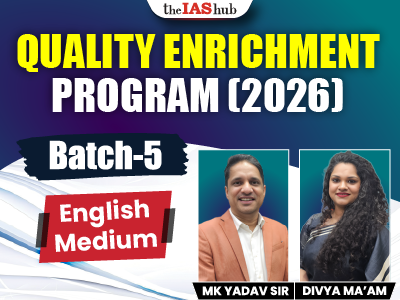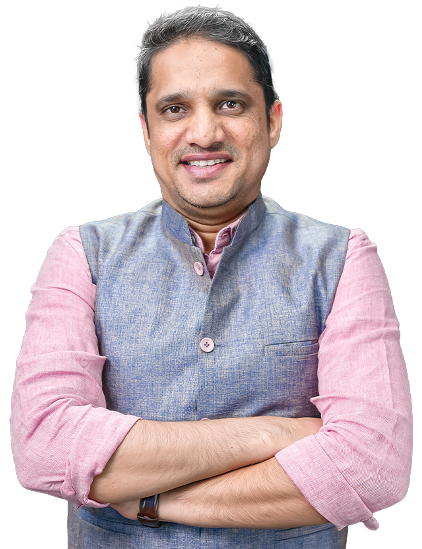[ez-toc]
President's Rule
President's Rule: Manipur CM recently resigned, and asked the Governor to dissolve assembly. He is likely to submit a report to the Centre, possibly
President’s Rule could be imposed.
About: President’s Rule (State Emergency) is imposed under
Article 356 when a state's constitutional machinery fails.
- It allows the central government to take direct control of state governance.
- It is one of the three types of emergencies (National, State & Financial Emergency) under the Indian Constitution.
- Invoked due to political instability, law & order breakdown, or a hung assembly.
Constitutional Provisions regarding Emergency in India:
- Article 355: Centre ensures that the government of every state is carried on in accordance with the provisions of the Constitution.
- Article 356: President can take over a state's functions if its government fails constitutionally.
- Article 357: Exercise of legislative powers under proclamation issued under Article 356.
- Article 365: If a state fails to follow the Centre’s directions, the President can assume control.
Parliamentary Approval & Duration:
- Approval by Parliament: Must be sanctioned by both Houses within two months. When Parliament is not in session - proclamation survives until 30 days from the first sitting of the Lok Sabha, provided RS has approved it.
- Validity: Initially for six months, extendable up to 3 years (max) with approval every six months. President can revoke at any time without parliamentary approval.
Supreme Court Judgments & Key recommendations on President’s Rule:
- S.R. Bommai Case (1994): President’s Rule is subject to judicial review.
- Sarkaria Commission: Article 356 should be used only as a last resort.
- Punchhi Commission: Emergency should be localized, affecting only specific districts, not the entire state.
SRY Gene
SRY Gene: Three cases of females with the SRY gene have been reported recently. These cases reinforce the
SRY gene’s primary role in male development.
About: SRY Gene found on the
Y chromosome, it triggers
male development. In its absence, development follows the
female pathway.
- It activates a cascade of genes that trigger the formation of testes in the embryo, which then produce testosterone, promoting male characteristics.
Chromosomal Makeup: Humans have 23 pairs of chromosomes, including one pair of sex chromosomes: XX (female) or XY (male).
- Female's Eggs - carry X chromosome and Male’s Sperm either X or Y.
SRY Gene Function: If the SRY gene is present and functional, the embryo develops into a male; if absent, it follows the female pathway.
Santorini Island
Santorini Island: Greece has declared a
state of emergency on
Santorini as
frequent earthquakes shake the island and nearby
Aegean islands multiple times a day.
About: Santorini Island (Thera) is a volcanic crater island that is located in Southern
Aegean Sea,
southeastern Greece.
- Island Group: Southernmost in the Cyclades, ~128 nautical miles SE of Greek mainland, ~63 nautical miles N of Crete.
- Volcanic Origin: Part of an exploded volcano, forming the South Aegean Volcanic Arc.
- Active Volcano: One of the few active volcanoes in Greece & Europe. Caldera, A sea-filled volcanic caldera with steep, colorful cliffs on three sides.
- Famous for whitewashed houses, blue waters, dramatic views, and fabulous sunsets. Home to the ancient settlement of Thira.
About Volcanic Crater Island: Formed by volcanic activity, either filling with water or remaining elevated above sea level.
Mount Taranaki
Mount Taranaki: Taranaki Maunga (Mount Taranaki) in New Zealand has been recently achieved a human status.
About Mount Taranaki: Official names of the mountains are Mount
Egmont & Mount
Taranaki.
Location: Situated in
Egmont National Park, North Island, New Zealand.
Features: It is a
stratovolcano, a composite cone made of alternating ash and lava layers.
- Symmetry: One of the most symmetrical volcanic cones in the world.
- Ring Plain: Surrounded by a circular deposit of volcanic material from lahars and landslides.
- Formation: Created by subduction of the Pacific Plate beneath the Australian Plate.
- Magma Source: Likely from a deeper origin than Taupo Volcanic Zone volcanoes.
- Elevation: 8,261 feet, making it the second highest mountain in New Zealand’s North Island.
- Dormant & Snow-Capped: A dormant volcano covered in snow.
Cultural & Legal Recognition:
- Legal Personhood: Third natural entity in New Zealand with legal status, after Te Urewera National Park and Whanganui River.
- Maori Significance: Indigenous Maori people revere Taranaki Maunga as a sacred ancestor.
Ranikhet Disease (Newcastle Disease) Outbreak
Ranikhet Disease (Newcastle Disease) Outbreak: Suspected
highly virulent Ranikhet disease caused the death of nearly
1.5 lakh chickens in Andhra Pradesh’s Eluru, Guntur, Prakasam, and Godavari districts recently.
About Ranikhet Disease: Highly contagious viral disease affecting poultry (chickens, turkeys, ducks).
- Caused by virulent avian avulavirus 1 (Newcastle disease virus - NDV) or avian paramyxovirus-1 (APMV-1).
- Affects respiratory, nervous, and digestive systems of birds.
- Leads to drop in egg production and fertility issues.
- Morbidity is high; mortality varies from 50-100%.
- Minor zoonosis – Can cause mild conjunctivitis in humans, but self-limiting.
Transmission: Direct contact with infected bird secretions (faeces, saliva).
- Contaminated feed, water, clothing, and equipment.
- Virus survives for weeks in the environment, especially in cool weather.
Symptoms: Varies by age of birds.
- Young birds: Sneezing, gasping, weakness (resembles infectious bronchitis).
- Rapid spread: Deaths occur quickly and increase daily.
Treatment: No specific treatment available, proper housing and care can reduce disease severity.
Dhimsa Dance
Dhimsa Dance: Tribal families from
Neelabandha, a hilltop hamlet in
Anakapalli district, Andhra Pradesh, received electricity for the first time since Independence.
- They celebrated the occasion with the Dhimsa dance.
- About Dhimsa Dance: It is a tribal dance, performed by Bagata, Valmiki, Poraja, Khond, Gadaba, Kondadora, Mukadora, and Kotia tribes of Andhra Pradesh.
- Occasions: Celebrated during festivals, weddings, and the hunting festival (April), where men and women dance for hours.
- Origin: Traced to Koraput region, Odisha, home to the Ghond Tribe.
- Varieties: There are 12 types of Dhimsa dance.
- Music & Instruments: Accompanied by wind and percussion instruments like dappu, tudumu, mori, kidgi, gilka, and jodukommulu.
- Themes: Reflect mythologies, folktales, traditions, economic activities, kinship, and marital life.
- Performance Style: Dancers form circles, linking arms behind each other.
- Movements mainly involve hands and legs & performed in small or large groups as a team.
Baltic Nations
Baltic Nations: The three Baltic States disconnected their electricity systems from Russia’s power grid recently.
- About Baltic Nations: Located in Northern Europe, along the eastern coast of the Baltic Sea.
- Countries: Includes Estonia, Latvia, and Lithuania.
- Borders: West & North (Baltic Sea) East (Russia), Southeast (Belarus) Southwest (Poland & Russia’s Kaliningrad exclave), Capitals: Estonia (Tallinn), Latvia (Riga), Lithuania (Vilnius)
- Ethnic Russians: Around 25% of the population in Estonia & Latvia
- Independence: First gained independence from the Russian Empire (1918) after World War I.
- Regained independence from the Soviet Union (early 1990s).
EU Membership: Became
European Union (EU) members in 2004.










